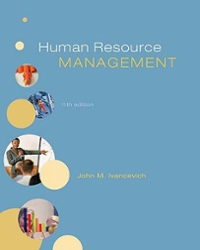America's workforce has in the past been largely made up of the heads of traditional families-husbands who
Question:
America's workforce has in the past been largely made up of the heads of traditional families-husbands who work as breadwinners while wives remain home to raise the children. However, today the "traditional family" represents less than 10 percent of all households. Increasingly, both spouses are launching careers and earning incomes. Dual-career couples now account for 40 percent of the workforce (more than 53 million employees), and their numbers will substantially increase. The situation of two spouses with careers that are both considered important has become something managers can't ignore. As more women enter the workforce, dual-career couples will become a consideration in decisions about hiring, promotion, relocation, and job commitment.
The advent of the dual-career couple poses challenges for the working spouses and for business. According to one survey of more than 800 dual-career couples by Catalyst, couples experience a myriad of problems, most notably difficulties with allocating time (the top-ranked complaint), finances, poor communication, and conflicts over housework.
For couples with children, meeting the demands of career and family usually becomes the top concern. Studies indicate that dual-career families need (1) benefit plans that enable couples to have children without jeopardizing their careers; (2) more flexible work arrangements to help balance the demands of family and career; (3) freedom from anxieties about child care while at work; and (4) assistance from the employer in finding employment for the spouse when an employee relocates (this is a need for both parents and childless couples).
For businesses, the challenge lies in helping to ease the problems of dual-career couples, especially those with children. According to a study commissioned by Fortune magazine, organizations are losing productivity and employees because of the demands of family life. The study found that among the 400 working parents surveyed, problems with child care were the most significant predictors of absenteeism and low productivity.
For example, 41 percent of those surveyed had taken at least one day off in the three months preceding the survey to handle family matters; 10 percent had taken from three to five days. (On a national scale, these figures amount to hundreds of millions of dollars in lost productivity.) About 60 percent of the parents polled expressed concerns about time and attention given to their children, and these anxieties were linked to lower productivity. Overall, many experts advise that companies that ignore the problems of dual-career couples and working parents stand to lose output and even valued employees. Companies are beginning to respond to these needs in a number of ways.
Questions
1. What are the advantages and potential liabilities of hiring two-career couples, beyond those noted in the case?
2. Many of the services for dual-career couples and parent employees are provided by large corporations that have far greater financial resources than smaller companies. Identify and discuss potential ways in which a small company’s HRM function can alleviate the challenges facing employees who are parents and employees with working spouses.
3. Suppose that a dual-career couple involves spouses who are at different career stages. Does this situation pose problems for the couple? For the organization or organizations employing them? Discuss.
Step by Step Answer:






